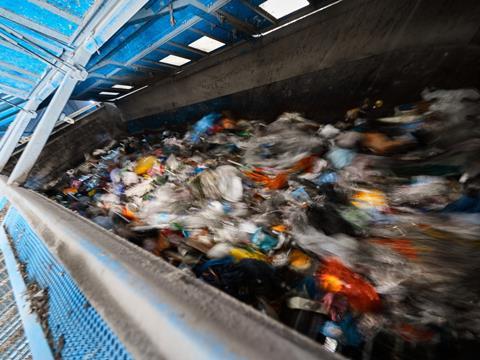
According to Plastics Recyclers Europe, the total European installed plastics recycling capacity saw a 7% decline in growth rate year-on-year and reached 12.5 million tonnes in 2022 – potentially putting Europe at risk of missing legislative targets.
Its latest report examines 850 different recycling sites across Europe, many of them small, with an average capacity of 15,000 tonnes. Plastics Recyclers Europe states that the plastics recycling sector consists of over 30,000 workers and generates a turnover of €10.4 billion.
The decrease in growth rate from 17% to 10% year-on-year is attributed to heavy market disruptions that the European market has been facing since 2020.
“Progress is indispensable for ensuring the viability of the plastics recycling industry,” said Ton Emans, president at Plastics Recyclers Europe. “While the commitment from recyclers remains strong, our sector has faced unprecedented challenges, first with the halt of activities during the COVID-19 outbreak, followed by the energy crisis in 2022.
“Most recently, in 2023, the concerningly low demand for recyclates hit the sector, resulting from low prices for virgin plastics due to reduced industrial production in the EU and cheap imports of recycled plastic from outside the EU. Moving forward, enforcement of legislative measures will be essential in ensuring the progress can be continued.”
This report is Plastics Recyclers Europe’s first to distinguish between polyethylene and polypropylene, which were previously combined into a single figure.
Flexible polyolefins, PET, and rigid polyolefins are the polymer grades with the highest capacities, the report says, and constitute over 80% of the total recycling capacity. Germany, Italy, Spain, the UK, and France are said to make up 60% of the geographic dispersion of recycling activities.
Polyethylene and polypropylene flexibles are thought to hold the largest relative share of installed recycling capacity (compared to other polymers) in Spain, Italy, Poland, and Belgium. In France, PET makes up almost one-third of the total capacity.
Belgium, the Netherlands, Poland, and Romania are reported to have experienced the fastest capacity growth compared to their previous year.
Plastics Recyclers Europe calculates that installed recycling capacity increased by 17% in 2021, with an estimated investment total of €1.75 billion thought to have contributed to this. Nevertheless, decreased demand is feared to have slowed the growth rate of recyclate production and threatened the likelihood of achieving legislative targets.
On the other hand, plastics recycling activities are thought to have cut out over 10 million tonnes of CO2 emissions in 2022.
Plastics Recyclers Europe anticipates that new legislation like the Packaging and Packaging Waste Regulation or the End-of-Life Vehicles Directive will implement new targets that will help drive plastic waste management and circularity in Europe. It recommends the creation of enforcement mechanisms and the harmonization of practices across Member States to make further progress.
The company previously called for an independent third-party certification system to ensure transparency and traceability as low demand for recyclate produced in the EU and high imports from outside the continent raised concerns for the European plastics industry.
This was followed by a manifesto in which Plastics Recyclers Europe urged the EU to drive competitiveness and innovation for plastics, listing science-based policies, traceable imports, and realistic targets amongst its recommended points of priority.
Meanwhile, another report from Eunomia and the Alliance to End Plastic Waste sought harmonization in the pursuit of improved mechanical recycling capacity and fulfilled recycling targets. They underlined the need for a clear definition of quality specifications for mechanical recyclates to increase the volume of recycled content in plastic products and help the plastics industry meet key application requirements.
If you liked this article, you might also enjoy:
The L’Oréal approach to packaging sustainability
The way we talk about plastic needs to change – here’s how to get it right
What steps is Apple taking to make its packaging more sustainable?












No comments yet